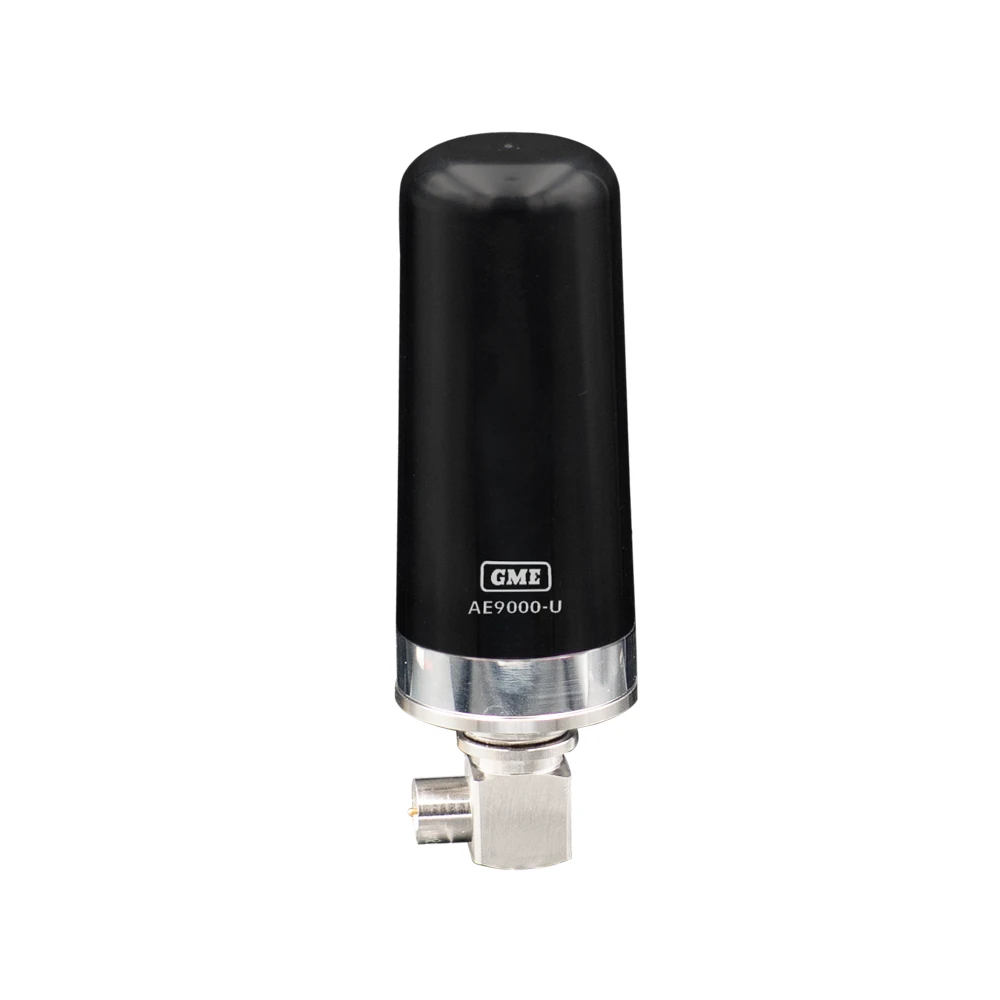How to Find Unlimited Video Ideas Your Audience Will Love is the key to unlocking consistent content creation that resonates with your viewers. This guide will take you on a journey through understanding your audience, brainstorming creative concepts, and implementing strategies to keep your video pipeline full.
We’ll delve into the process of researching trends, crafting engaging content, and optimizing your videos for maximum impact. From understanding audience preferences to building a sustainable content calendar, we’ll cover the essential steps to create videos your audience will not only watch, but love.
Brainstorming Video Ideas

Generating compelling video ideas is crucial for attracting and retaining your audience. It requires a strategic approach that leverages various sources of inspiration and creative techniques. This section Artikels several methods to help you brainstorm a diverse range of video concepts.
Using the Question and Answer Format
The “question and answer” format provides a direct way to address your audience’s needs and concerns. By identifying common questions, you can create videos that offer immediate value and establish your expertise.Consider these steps:
- Identify Common Questions: Analyze your audience’s comments, emails, and social media interactions. Review forums, Q&A sites (like Quora), and competitor content to understand the topics they are discussing.
- Categorize Questions: Group similar questions into broader themes or categories. This helps organize your video ideas and identify potential series.
- Develop Video Scripts: Transform each question into a video title and script. Focus on providing clear, concise answers with actionable advice or solutions.
- Promote Answers: Use the question in the title and throughout the video to ensure it’s easily discoverable by those searching for that information.
For example, if your audience frequently asks, “How do I improve my ?” you could create a video titled “5 Tips to Boost Your Website Ranking.”
Transforming Blog Posts and Articles into Video Scripts
Repurposing existing written content into video scripts is an efficient way to create new video content. Blog posts and articles provide a solid foundation of information that can be adapted for video.Here’s how to convert written content into engaging videos:
- Identify Suitable Content: Select blog posts or articles that are evergreen (relevant over time), have strong engagement metrics, and cover topics your audience finds interesting.
- Artikel the Key Points: Break down the article into its main points and supporting arguments. These become the core segments of your video.
- Write a Script: Transform each point into a script segment, adding visual elements and examples to enhance engagement. Consider using a conversational tone to make the video more approachable.
- Add Visuals: Incorporate screen recordings, animations, graphics, or B-roll footage to illustrate your points and keep viewers engaged.
- Adapt the Format: Consider different video formats such as explainer videos, listicles, or tutorials, depending on the content and target audience.
For instance, an article on “The Benefits of Regular Exercise” could become a video outlining those benefits, using visuals of people exercising and highlighting the scientific basis behind the claims.
Leveraging Industry News and Trends
Staying informed about industry news and trends allows you to create timely and relevant video content. This positions you as a thought leader and helps attract viewers interested in current events.Follow these steps:
- Monitor Industry News: Subscribe to industry publications, newsletters, and social media accounts. Use tools like Google Alerts to stay informed about the latest developments.
- Identify Trending Topics: Look for emerging trends, product launches, and major announcements.
- Create Timely Videos: Produce videos that address these topics, offering insights, analysis, or tutorials.
- Provide Unique Perspectives: Offer your unique perspective or expert analysis to differentiate your content.
- Use Relevant s: Optimize your video titles, descriptions, and tags with s related to the news or trend to improve search visibility.
If a new AI tool is released, you could create a video review, tutorial, or analysis of its capabilities.
Using Mind Mapping Techniques
Mind mapping is a visual brainstorming technique that helps you explore a wide range of video ideas and connect related concepts. It encourages free-flowing thought and allows you to visualize the relationships between different topics.To use mind mapping:
- Start with a Central Topic: Write your primary topic or in the center of a blank page or digital canvas.
- Add Main Branches: Draw branches extending from the center, representing main categories or s related to your central idea.
- Add Sub-Branches: Extend further branches from the main branches to explore specific video ideas within each category.
- Use s and Images: Use s and short phrases to represent each idea. Consider adding images or icons to make the map more visually engaging.
- Connect Ideas: Draw lines to connect related ideas, highlighting relationships and potential video series.
For example, if your central topic is “Cooking,” you might create main branches for “Recipes,” “Techniques,” and “Equipment.” Then, you could add sub-branches under “Recipes” for specific cuisines, dishes, or dietary restrictions.
Different Video Content Formats and Best Use Cases
Choosing the right video format is crucial for effectively communicating your message and engaging your audience. Each format has its strengths and is best suited for different types of content.Here are some common video formats and their best use cases:
- Tutorials: Step-by-step guides on how to do something. Best for demonstrating skills, software usage, or DIY projects.
- Reviews: Evaluations of products, services, or experiences. Excellent for building trust and providing valuable insights.
- Interviews: Conversations with experts or interesting individuals. Great for sharing knowledge, providing diverse perspectives, and building authority.
- Vlogs (Video Blogs): Personal video diaries or updates. Effective for building a personal brand and connecting with your audience on a more intimate level.
- Explainer Videos: Concise videos that explain a concept, product, or service. Ideal for simplifying complex topics and increasing understanding.
- Listicles: Videos that present information in a list format (e.g., “Top 5 Tips”). Highly shareable and easy to consume.
- Case Studies: In-depth analysis of successful projects or examples. Useful for demonstrating real-world results and providing social proof.
- Animated Videos: Videos created using animation techniques. Suitable for explaining complex concepts, creating visually appealing content, or telling stories.
By selecting the right format, you can create videos that are more engaging, informative, and effective at achieving your goals.
Researching Trending Topics and Themes

Understanding current trends is crucial for creating videos your audience will love. By staying informed about what’s popular, you can ensure your content is relevant and captures attention. This section will explore various methods for identifying trending topics and themes, helping you stay ahead of the curve.
Using Google Trends to Identify Popular Search Terms and Topics
Google Trends is a powerful, free tool for understanding search interest over time. It provides insights into the popularity of search terms, topics, and regions.To use Google Trends effectively:
- Enter a search term: Type a or topic related to your niche into the search bar. For example, if your niche is “healthy recipes,” you could search for “vegan recipes.”
- Analyze the “Interest over time” graph: This graph shows the search interest for your term over time. Look for upward trends, which indicate increasing popularity.
- Refine your search: Use the “Compare” feature to compare the popularity of different search terms. For example, compare “vegan recipes” with “vegetarian recipes” to see which is more popular.
- Filter by region: Use the “Region” filter to see where your search term is most popular. This can help you tailor your content to specific audiences.
- Explore “Related queries” and “Related topics”: Google Trends suggests related search terms and topics, providing additional video ideas.
By regularly checking Google Trends, you can identify rising trends and create timely videos that resonate with your audience.
Using Social Listening Tools to Monitor Conversations and Identify Emerging Trends
Social listening tools allow you to monitor conversations across various social media platforms. These tools are invaluable for identifying emerging trends and understanding audience sentiment.Here’s how to use social listening tools:
- Select a tool: Choose a social listening tool that suits your needs and budget. Popular options include Hootsuite, Sprout Social, and Brandwatch.
- Set up monitoring: Create searches or “streams” to monitor relevant s, hashtags, and brand mentions related to your niche.
- Analyze the data: Pay attention to the volume of mentions, sentiment (positive, negative, or neutral), and the topics being discussed.
- Identify emerging trends: Look for patterns, spikes in mentions, and new hashtags or s that are gaining traction.
- Engage with the conversation: Once you’ve identified a trend, consider creating a video that addresses it or joins the conversation.
Social listening tools provide real-time insights into what your audience is talking about, allowing you to create videos that are relevant and timely.
Analyzing Competitor Content to Discover Popular Themes and Content Formats
Analyzing your competitors’ content can reveal what’s working well in your niche. By understanding their strategies, you can identify popular themes and content formats to emulate or improve upon.Here’s a method for competitor content analysis:
- Identify your competitors: Compile a list of channels or creators in your niche.
- Analyze their most popular videos: Look at the videos with the highest view counts, engagement rates (likes, comments, shares), and watch time.
- Identify common themes: Determine the recurring topics, themes, and s used in their popular videos.
- Examine content formats: Note the types of videos they create, such as tutorials, reviews, listicles, or vlogs.
- Analyze video structure: Evaluate the intro, body, and outro of the videos. Note how they capture attention and maintain engagement.
- Assess audience interaction: Check how they interact with comments and how they respond to questions or suggestions.
- Identify gaps and opportunities: Look for areas where you can create content that’s different or better than your competitors’.
By understanding what resonates with your competitors’ audiences, you can create videos that appeal to similar interests while differentiating your content.
Using Online Forums and Communities to Find Out What Questions Your Audience Is Asking
Online forums and communities are goldmines of information about your audience’s interests and pain points. These platforms provide direct access to the questions and concerns your target audience has.To find out what your audience is asking:
- Identify relevant forums and communities: Search for online forums, subreddits, Facebook groups, or other online communities related to your niche.
- Monitor discussions: Read through the threads and posts to understand the topics being discussed and the questions being asked.
- Identify common questions: Look for frequently asked questions or recurring themes in the discussions.
- Analyze the language used: Pay attention to the specific language and terminology used by your audience.
- Create video content to address the questions: Use the information gathered from forums and communities to create videos that directly answer your audience’s questions.
- Engage with the community: Participate in the discussions and offer helpful advice to build trust and credibility.
Online forums and communities provide direct insights into your audience’s needs and interests, helping you create valuable video content.
Designing a System for Creating a Content Calendar to Organize and Schedule Video Releases Based on Trending Topics
A content calendar is essential for organizing and scheduling your video releases. It helps you stay on track, plan ahead, and ensure your content aligns with trending topics.Here’s a system for creating a content calendar:
- Choose a calendar format: Use a spreadsheet (like Google Sheets or Microsoft Excel), a project management tool (like Trello or Asana), or a dedicated content calendar platform.
- Identify trending topics: Based on your research using Google Trends, social listening tools, and competitor analysis, identify the trending topics you want to cover.
- Brainstorm video ideas: Generate video ideas related to the trending topics, keeping in mind your audience’s interests and your niche.
- Assign dates and times: Schedule your video releases in the calendar, considering factors like optimal posting times and the frequency of your releases.
- Set deadlines: Assign deadlines for each stage of the video creation process, including scriptwriting, filming, editing, and promotion.
- Track progress: Monitor your progress and update the calendar as you create and release videos.
- Review and adjust: Regularly review your content calendar and make adjustments based on your performance and changing trends.
A well-structured content calendar ensures you stay organized, plan effectively, and release videos that align with trending topics, increasing your chances of success.
Identifying Content Gaps

Finding content gaps is crucial for creating videos that resonate with your audience and differentiate your channel. It involves uncovering unmet needs and unanswered questions within your niche, allowing you to provide unique value. This process helps you discover what your audience is actively seeking but not finding in video format, ultimately leading to increased engagement and channel growth.
Using Tools to Find Content Gaps
Several tools can help you identify content gaps. These tools analyze search trends, competitor content, and audience behavior to reveal areas where video content is lacking or can be improved.
- Research Tools: Tools like Ahrefs, SEMrush, and Google Planner help you discover s and search queries related to your niche. Analyze search volume, competition, and related s to identify topics with high search interest but limited video coverage.
- YouTube Search: Directly using YouTube’s search bar can be a powerful tool. Start typing a topic related to your niche and observe the auto-suggestions. These suggestions often reflect what people are actively searching for. Also, analyze the results for existing videos to see what’s missing or can be improved.
- Google Trends: Google Trends allows you to track the popularity of search terms over time. Use it to identify trending topics and see if there’s a corresponding lack of video content on those topics. Look for rising search terms that might represent emerging interests within your niche.
- Social Listening Tools: Tools like Hootsuite and Sprout Social enable you to monitor social media conversations related to your niche. Identify questions, complaints, and discussions that suggest unmet needs or frustrations your audience experiences. This can reveal content gaps.
Identifying Audience Search Intent
Understanding what your audience is searching for but not finding in video format is critical for creating relevant content. This requires analyzing search queries, social media discussions, and audience feedback.
- Analyze Search Queries: Examine the s and phrases people are using to find information related to your niche. Look for long-tail s, which are more specific and often indicate unmet needs.
- Review YouTube Comments: Pay attention to comments on existing videos. Look for questions that haven’t been answered, requests for clarification, or suggestions for future content.
- Examine Forum Discussions: Browse relevant online forums and communities. Identify common questions, problems, and discussions related to your niche. These can reveal topics that people are struggling with.
- Conduct Polls and Surveys: Use YouTube polls, community tabs, or external survey tools to ask your audience directly about their interests and pain points. This direct feedback can reveal specific content gaps.
Comparing Content to Competitors
Comparing your content to that of your competitors helps you identify areas for improvement and uncover potential content gaps. This involves analyzing the strengths and weaknesses of their videos and identifying opportunities to offer something unique.
- Analyze Competitor Video Topics: Make a list of your competitors’ most popular videos and the topics they cover. This provides a baseline understanding of the existing content landscape.
- Assess Content Quality: Evaluate the quality of your competitors’ videos. Consider factors such as production value, clarity, accuracy, and engagement. Identify areas where you can surpass their quality.
- Identify Missing Information: Watch competitor videos and identify any information that is missing or poorly explained. This could include specific details, examples, or perspectives.
- Analyze Audience Engagement: Look at the comments, likes, dislikes, and shares on competitor videos. Identify topics or approaches that resonate with their audience and those that don’t.
Using Audience Feedback
Audience feedback is a valuable resource for identifying content gaps. Listening to your audience’s needs and incorporating their suggestions can lead to the creation of highly relevant and engaging videos.
- Monitor YouTube Comments: Actively respond to comments on your videos and take note of any questions, suggestions, or criticisms. This provides direct insight into what your audience wants to see.
- Analyze Social Media Interactions: Monitor mentions of your channel or brand on social media platforms. Pay attention to comments, messages, and discussions related to your content.
- Conduct Polls and Surveys: Use YouTube polls, community tabs, or external survey tools to ask your audience directly about their interests and pain points.
- Encourage Direct Communication: Invite your audience to reach out via email or social media. This can foster a more direct dialogue and provide valuable feedback.
Content Gap Table
The following table showcases content gaps and potential video ideas to fill them.
| Content Gap | Description | Potential Video Idea | Why It Works |
|---|---|---|---|
| Beginner Guide to [Specific Software] | Many videos cover the software’s features but lack a step-by-step guide for complete beginners. | “Beginner’s Guide: Mastering [Specific Software] in 30 Minutes” | Addresses a specific audience segment with a clear learning path, providing a solution to a common pain point. |
| Troubleshooting [Common Issue] | Videos on common issues often lack specific solutions or troubleshooting steps. | “Fixing [Common Issue]: A Step-by-Step Guide” | Provides actionable solutions to a common problem, offering immediate value to viewers. |
| Comparison of [Two Products] | Limited videos directly compare similar products side-by-side. | “[Product A] vs. [Product B]: Which is Right for You?” | Helps viewers make informed decisions by directly comparing options and highlighting differences. |
| Advanced Techniques for [Specific Skill] | Many videos cover the basics but lack advanced techniques. | “Advanced Techniques: Taking Your [Specific Skill] to the Next Level” | Caters to a more experienced audience seeking to improve their skills, fulfilling a niche need. |
Using User-Generated Content

Incorporating user-generated content (UGC) into your videos is a fantastic way to boost engagement, build a community, and add authenticity to your brand. It shows your audience that you value their input and perspectives, creating a stronger connection between you and your viewers. Encouraging your audience to participate can significantly enhance your video content and overall channel success.
Encouraging Audience Content Creation
To motivate your audience to create and share their own video content, it’s essential to make it easy and appealing. Clear guidelines, compelling incentives, and a supportive community are key elements.
- Establish Clear Guidelines: Provide specific instructions on what type of content you’re looking for. Be clear about the video’s theme, duration, and any required elements (e.g., using a specific hashtag, mentioning your brand, or demonstrating a particular action). This helps ensure that the submissions align with your brand and video objectives.
- Offer Incentives: Motivate participation by offering rewards. These could range from shout-outs in your videos to prizes like merchandise, gift cards, or even features on your channel. Consider offering tiered rewards based on the quality or creativity of the submissions.
- Create a Dedicated Hashtag: A unique hashtag makes it simple for viewers to share their content and for you to find it. Promote the hashtag consistently in your videos, social media posts, and channel banner. Monitor the hashtag regularly to identify and curate the best submissions.
- Build a Supportive Community: Acknowledge and celebrate submissions. Respond to comments, like and share user-generated content, and give credit to the creators. This fosters a sense of belonging and encourages further participation. Highlight successful entries to inspire others.
- Make it Easy to Submit: Simplify the submission process. Provide a clear call to action in your videos and on your social media platforms. Consider using a dedicated email address or a form to collect submissions. If possible, offer multiple submission options, such as directly uploading to a platform or tagging your brand on social media.
Contests and Challenges
Contests and challenges are effective ways to encourage audience participation and generate user-generated content. These can be themed around your video content or brand, and they offer a fun and engaging way for your audience to interact with you.
- Video Challenges: Invite viewers to create videos based on a specific theme or action. For example, a cooking channel could ask viewers to recreate a recipe, a gaming channel could challenge viewers to complete a specific level or task, or a fitness channel could ask viewers to share their workout routines.
- Photo Contests: Encourage viewers to share photos related to your brand or video content. A travel channel could ask viewers to share their travel photos using a specific hashtag, or a beauty channel could ask viewers to share their makeup looks.
- “Best Of” Competitions: Host competitions where viewers vote on their favorite submissions. This could be the funniest video, the most creative artwork, or the best interpretation of a challenge. The voting process itself can generate additional engagement and create a sense of community.
- Seasonal or Themed Challenges: Tie your contests to holidays, seasons, or special events. This can generate timely and relevant content. For example, a craft channel could host a holiday-themed crafting challenge, or a fashion channel could host a summer style contest.
- Partner with Other Creators: Collaborate with other YouTubers or influencers to host joint contests or challenges. This can expose your channel to a wider audience and increase participation.
Incorporating User-Generated Content into Videos
Seamlessly integrating user-generated content into your videos can enhance their appeal and value. This demonstrates that you value your audience’s contributions and builds a sense of community.
- Create Compilation Videos: Compile the best user-generated content into a single video. This is a straightforward and effective way to showcase submissions. For example, a gaming channel could create a compilation of funny gameplay moments submitted by viewers.
- Feature Content in Your Regular Videos: Integrate user-generated content directly into your regular videos. This could be in the form of a shout-out, a review, or a segment dedicated to audience contributions.
- Run Reaction Videos: React to or comment on user-generated content. This can be a fun and engaging way to interact with your audience and provide your perspective.
- Use Content as a Call to Action: Prompt your audience to create content in response to your videos. For example, after teaching a new skill, you can ask viewers to share their results.
- Offer a Variety of Formats: Use various formats for incorporating UGC. Consider including user-submitted photos, videos, quotes, or even written reviews.
Benefits of Featuring User-Generated Content
Featuring user-generated content provides several advantages that can significantly benefit your channel. These advantages include increased engagement, authenticity, and community building.
- Increased Engagement: UGC encourages audience participation, leading to more comments, likes, shares, and subscribers. This boosts your video’s visibility and helps it reach a wider audience.
- Enhanced Authenticity: UGC adds a layer of authenticity to your brand. Viewers trust content created by other viewers more than traditional advertising.
- Stronger Community Building: Featuring UGC fosters a sense of community among your viewers. They feel valued and connected to your brand.
- Cost-Effectiveness: UGC is a cost-effective way to generate content. It reduces the need for you to create all of your video content.
- Fresh Content Ideas: UGC can provide inspiration for new video ideas. It can show you what your audience is interested in and what they want to see more of.
Requesting and Integrating User-Generated Content: Best Practices and Legal Considerations
Effectively requesting and integrating UGC requires a thoughtful approach that respects your audience’s contributions and complies with legal requirements. Adhering to best practices and legal guidelines ensures a smooth and ethical process.
- Obtain Permission: Always ask for permission before using user-generated content. Provide a clear explanation of how you intend to use the content.
- Provide Clear Terms and Conditions: Establish clear terms and conditions for submitting content. These should Artikel the rights you have to use the content, including the ability to edit, modify, and distribute it.
- Give Credit: Always credit the creator of the content. This can be done in the video description, on-screen, or both. Acknowledging the creator shows respect and encourages future submissions.
- Offer a Release Form: Consider using a release form that grants you the necessary rights to use the content. This provides legal protection and clarity. The form should clearly state how the content will be used, the duration of use, and any compensation.
- Comply with Copyright Laws: Ensure that all content you feature complies with copyright laws. Only use content that the creator has the right to share, and avoid using copyrighted music or other material without permission.
- Protect Privacy: Respect the privacy of your audience. If you feature content that includes personal information, obtain consent and ensure that you handle the data responsibly.
- Be Transparent: Be transparent with your audience about how you are using their content. Let them know that their content may be featured in your videos.
- Edit Responsibly: Edit user-generated content responsibly. Avoid making changes that could misrepresent the creator’s original intent. Always get consent before making significant edits.
- Maintain a Positive Tone: Communicate with your audience in a positive and respectful manner. Appreciate their contributions and respond to their feedback.
- Example: Imagine a fitness channel that asks viewers to share their workout routines. The channel creates a release form, providing a detailed explanation of how the content will be used (e.g., in compilation videos, on social media). The form specifies that the channel can edit the content for length and clarity, and it includes a disclaimer about copyright. The channel provides credit to each contributor in the video description and on-screen.
This ensures legal compliance and maintains a positive relationship with the audience.
Last Recap

In conclusion, finding unlimited video ideas your audience will love is a dynamic process. By understanding your audience, staying current with trends, and consistently adapting your approach, you can create a thriving video presence. Embrace the power of storytelling, encourage audience participation, and never stop experimenting to keep your content fresh and engaging.